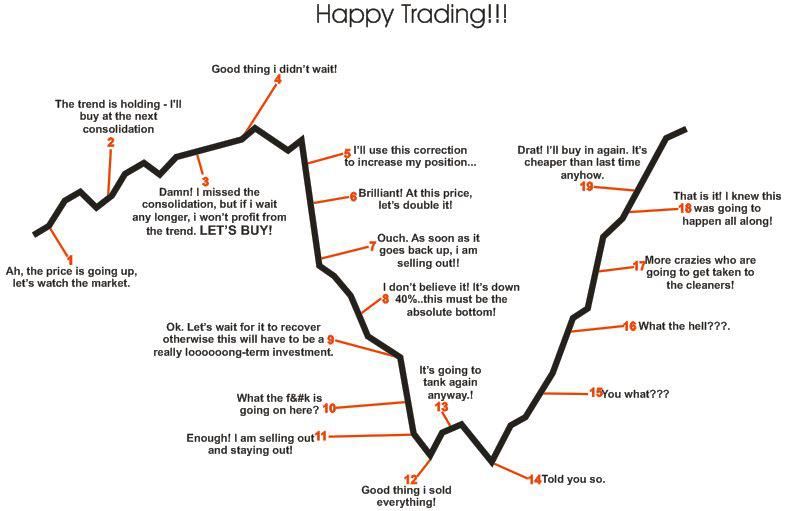just another realization occurred to me while reading Greg Michalowski, sharing it to you guys 
how many times you have heard this:
Markets either go up or down, flipping a coin should be enough to give 50% odds of success!
----
practically we know things are not as easy as the coin flip argument suggests!
do you know WHY?! Here is the explanation.
on a normal trade there will be a bid-ask spread for 2 pips.
when you place a long order, the ask price should move up 3 pips from
current ask price to book 1 pip profit.
i.e Here is long position:
when you place long order: bid = 1.2334 ask =1.2336
when you book 1 pip profit: bid = 1.2337 ask =1.2339
to allow 3 pips movement up we should accept the risk of 3 pips down
assuming markets go up/down 50-50 times. so a loss 3 pip SL is needed.
if you add in the 2 pip spread, when the SL is triggered you will incur 5 pips loss!
Lets say we have a magic coin flip technical indicator that's right on about whooping 84% and we make 100 trades!
84 times we make 1 pip
16 times we loss 5 pips !
Net gain = 84x1 - 16x5 =4 pips ! duh! after 100 trades (assuming you don't pay brokerage!)
=========
so there you go, even with a magical coin flipper with 84% accuracy,
and markets going up or down by 50% probability, the trader will go broke!
how many times you have heard this:
Markets either go up or down, flipping a coin should be enough to give 50% odds of success!
----
practically we know things are not as easy as the coin flip argument suggests!
do you know WHY?! Here is the explanation.
on a normal trade there will be a bid-ask spread for 2 pips.
when you place a long order, the ask price should move up 3 pips from
current ask price to book 1 pip profit.
i.e Here is long position:
when you place long order: bid = 1.2334 ask =1.2336
when you book 1 pip profit: bid = 1.2337 ask =1.2339
to allow 3 pips movement up we should accept the risk of 3 pips down
assuming markets go up/down 50-50 times. so a loss 3 pip SL is needed.
if you add in the 2 pip spread, when the SL is triggered you will incur 5 pips loss!
Lets say we have a magic coin flip technical indicator that's right on about whooping 84% and we make 100 trades!
84 times we make 1 pip
16 times we loss 5 pips !
Net gain = 84x1 - 16x5 =4 pips ! duh! after 100 trades (assuming you don't pay brokerage!)
=========
so there you go, even with a magical coin flipper with 84% accuracy,
and markets going up or down by 50% probability, the trader will go broke!
Last edited:








